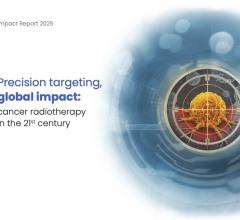
July 17, 2017 — The American Society for Radiation Oncology (ASTRO) has issued an update to its recommendations for medical insurance coverage regarding the use of proton beam therapy to treat cancer. The updated Proton Beam Therapy Model Policy provides guidance to payers on clinical indications that are appropriate for treatment with proton therapy and should be covered by health insurance, including Medicare, Medicaid and private insurance.
Proton beam therapy is an advanced type of external-beam radiation therapy that uses proton rather than photon beams to deliver radiation doses to a tumor. Proton therapy offers a high degree of precision, which allows radiation oncologists to target an escalated dose of radiation directly on a tumor and spare nearby healthy tissue. Proton therapy is particularly beneficial for patients with tumors that are near critical structures, such as lung tumors near the heart.
Based on new evidence published since the original policy was issued in 2014, the updated model policy outlines two categories of appropriate clinical indications, or diagnoses, for proton beam therapy. For indications in Group 1, coverage is recommended; for Group 2, coverage is recommended if additional requirements (outlined below) are met. Disease sites were assigned to one of the two categories based on evidence in published clinical data and current Medicare coverage.
Group 1 indications, or the clinical scenarios that frequently support the use of proton therapy based on medical necessity and published clinical data, were updated with five additions and one modification. Group 1 indications, with additions marked by asterisks, include:
- Malignant and benign primary central nervous system (CNS) tumors*;
- Advanced (e.g., T4) and/or unresectable head and neck cancers*;
- Cancers of the paranasal sinuses and other accessory sinuses*;
- Nonmetastatic retroperitoneal sarcomas*;
- Re-irradiation cases where cumulative critical structure dose would exceed tolerance dose*;
- Hepatocellular cancer (no longer required to be treated in a hypofractionated regimen*);
- Ocular tumors, including intraocular melanomas;
- Tumors that approach or are located at the base of skull, including but not limited to chordoma and chondrosarcomas;
- Primary or metastatic tumors of the spine where the spinal cord tolerance may be exceeded with conventional treatment or where the spinal cord has previously been irradiated;
- Primary or benign solid tumors in children treated with curative intent and occasional palliative treatment of childhood tumors when one of the criteria noted above apply; and
- Patients with genetic syndromes making total volume of radiation minimization crucial, such as but not limited to NF-1 patients and retinoblastoma patients.
The policy recommends coverage for Group 2 indications if the patient is enrolled in either an Institutional Research Board (IRB)-approved study or in a multi-institutional registry adhering to Medicare requirements for Coverage with Evidence Development (CED). These indications also represent the disease sites for which evidence is accumulating and may support future Group 1 coverage. While the policy specifies that no indications are deemed inappropriate for CED, it also specifies several systems for Group 2 indications:
- Non-T4 and resectable head and neck cancers (previously all head and neck malignancies*);
- Nonmetastatic prostate cancer (previously grouped with genitourinary carcinomas*);
- Breast cancer*;
- Thoracic malignancies, including nonmetastatic primary lung and esophageal cancers;
- Abdominal malignancies, including nonmetastatic primary pancreatic, biliary and adrenal cancers; and
- Pelvic malignancies, including nonmetastatic rectal, anal, bladder and cervical cancers.
“Recent research has expanded our understanding of the types of malignancies and clinical scenarios where proton beam therapy is most advantageous. This policy update reflects the most current knowledge regarding which patients will benefit from — and therefore should have access to — this cutting-edge treatment,” said ASTRO Chair David C. Beyer, M.D., FASTRO. “We also remain firmly committed to developing evidence to identify new areas where this technology might be beneficial as well as situations where it is not needed.”
The model policy update was developed by ASTRO’s Payer Relations Subcommittee, reviewed by the Health Policy Council and then approved by the Board of Directors in June 2017. Model policies differ from practice guidelines, which are written for physicians and outline recommendations to optimize clinical care. ASTRO also provides model policies for brachytherapy, intensity-modulated radiation therapy (IMRT), stereotactic body radiation therapy (SBRT) and stereotactic radiosurgery (SRS).
For more information: www.astro.org


 November 11, 2025
November 11, 2025 









